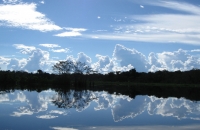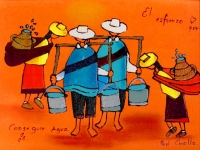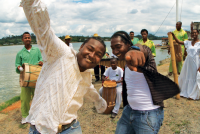

Équateur
The Americas
Ecuador
Capitale Quito
Population 14.5 million
Espérance de vie 75.3
L'accès à l'eau potable 95%
L'alphabétisation des adultes 91%
Mortalité des moins de 5 ans 20.9 per 1,000 live births
PIB par habitant $7,500

 La présente évaluation vise à l’acquisition de connaissances, avec pour objectif :
1) d’évaluer, au niveau national, la contribution du F-OMD à la réalisation des OMD, des principes de la Déclaration de Paris et de l’initiative réformatrice de l’ONU « Tous unis dans l’action »
2) de recenser les meilleures pratiques et les leçons apprises afin d’éclairer toute future programmation pour le développement
3) de relier les interventions programmatiques locales aux processus nationaux d’élaboration des politiques en mettant en évidence les initiatives pilotes qui ont donné de bons résultats et peuvent être reproduites à plus grande échelle.
La présente évaluation vise à l’acquisition de connaissances, avec pour objectif :
1) d’évaluer, au niveau national, la contribution du F-OMD à la réalisation des OMD, des principes de la Déclaration de Paris et de l’initiative réformatrice de l’ONU « Tous unis dans l’action »
2) de recenser les meilleures pratiques et les leçons apprises afin d’éclairer toute future programmation pour le développement
3) de relier les interventions programmatiques locales aux processus nationaux d’élaboration des politiques en mettant en évidence les initiatives pilotes qui ont donné de bons résultats et peuvent être reproduites à plus grande échelle.
Ecuador_Country Final Evaluation.pdf (1.73 MB)-
Fiche d'information du pays
 This Fact Sheet summarizes the key achievements of the Joint Programmes in Ecuador.
This Fact Sheet summarizes the key achievements of the Joint Programmes in Ecuador.
Ecuador Joint Programmes Fact Sheet.pdf (259 KB)



